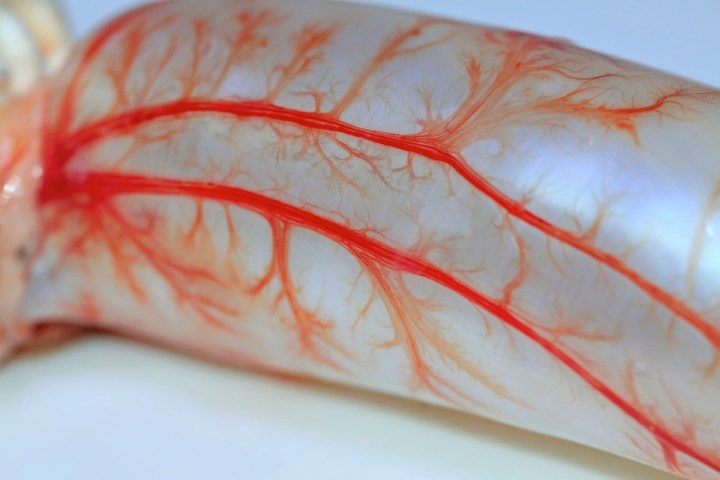
We have yet to reach that lofty goal but a new project carried out by researchers at Rice University and Baylor College of Medicine takes the dream one step closer to reality.
In a paper published in the journal Biomaterials Science, the researchers demonstrate a method of generating implantable tissues with functioning capillaries, the tiny blood vessels responsible for supplying the body with oxygen and other nutrients.
The demonstration involved using a combination of human endothelial cells and mesenchymal stem cells to initiate a process called tubulogenesis, that is a key element of the formation of said blood-transporting vessels.
“Here we are investigating tiny volumes of multicellular tissue, smaller than a raindrop,” Rice bioengineer Jordan Miller told Digital Trends. “But big things happen there. Endothelial cells are the cells lining all our blood vessels and they create our tiniest vessels: Capillaries. We studied these endothelial cells in natural and semi-synthetic materials that are compatible with 3D printing. We are optimizing the materials and cell formulations to get robust formation of tubules made entirely from the cells themselves.”
Miller says that 3D bioprinting has advanced dramatically over the past decade. However, there is still a big tradeoff that is difficult to avoid: An increase in 3D-printing resolution necessarily means a decrease in the total build volume. (Think of it like drawing a picture, where you can choose between spending your time adding detail to a small area, or sketching out a much larger image.)
“A 3D printer with a 1-micrometer resolution only has a cubic millimeter build volume, [which is] not big enough for much functional utility,” he continued. “So instead, we aim for 3D printers with about 50- to 200-micrometer resolution, and we want to work with these endothelial cells to make tiny capillaries that could eventually connect to larger vessels that we can readily 3D print. In that way, we would retain the build volume but still be able to develop nutrients to the smallest cell volumes. These findings will help cell biologist and bioengineers continue to make progress toward customized replacement organs.”
At present, Miller said the researchers are working to integrate their findings with this work into their existing work with 3D bioprinting. “Identifying materials formulations that work for 3D printing and that can simultaneously support robust capillary formation is the key to generating living tissues with multiscale vasculature spanning millimeters to microns,” he said.
Editors' Recommendations
- Nvidia turns simple text prompts into game-ready 3D models
- AMD is bringing 3D V-Cache back to Ryzen 7000 — but there’s a twist
- AMD’s revolutionary 3D V-Cache chip could launch very soon
- Fighting football injuries with 3D-printed, hyper-personalized pads
- AMD’s 3D-stacked Ryzen 7 5800X3D is ‘world’s fastest gaming processor’


